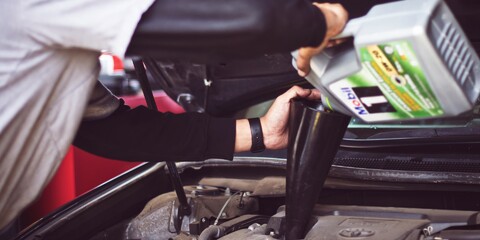
Learn The Carlingo: Car Maintenance Terminology
Lingo your likely to come across during car ownership
Part of being a responsible motorist is keeping your car in good working order, and if you want it to stay safe, efficient, and capable of living a long life, it needs regular maintenance.
As you navigate your MOTs, services, and the repairs that crop up in between, there can be a fair amount of car maintenance terminology to get your head around.
Below, we’ve put together a list of words and phrases that you’re likely to come across during your car ownership; how many are you familiar with?
Air Filter
Keeping things fresh in the cabin is the main job of the air filter, by grabbing those harmful airborne contaminants that would otherwise make their way into your breathing space as you’re driving. This includes pollen, bacteria, dust and mould.
Depending on your make and model, it’s recommended that you change your air filter every 15,000-30,000 miles.
Brake Fluid
Brake fluid is an essential part of your hydraulic braking system; without it, your car isn’t going to stop.
When braking, a piston enters the cylinder, which creates pressure throughout the hydraulic system, and forces brake fluid throughout the brake lines and into the caliper pistons. This applies force to the brake pads, and these are what stop your tyre rotors from turning.
Brake fluid doesn’t last forever; at regular intervals of either time or mileage, the brake fluid needs to be flushed out and replaced.
Catalytic Converter
A catalytic converter combats the toxic emissions produced by exhaust gasses; it converts them into less harmful versions, which can then be released into the atmosphere. It’s a vital part of a vehicle’s exhaust control system.
Coolant
It will come as no surprise that it gets rather hot under the bonnet when you’re driving, and coolant is on hand to bring things down to a manageable temperature. Coolant is a mixture of antifreeze and water, and works by constantly running through the engine passages, keeping it running at an optimal temperature.
Coolant should be changed at the intervals detailed in your vehicle’s manual.
Dipstick
A dipstick allows you to gauge the amount of engine oil in your vehicle - it’s a stick that’s clearly marked with the level of your oil when you dip it in. Just what it says on the tin!
ECU
The Engine Control Unit (ECU) is the brains of your car, and controls the engine electronically to keep it performing as it should, controlling things like the injection of fuel.
Engine Oil
If the ECU is the brains, think of the engine oil as the lifeblood. The oil lubricates the moving parts of your vehicle. Without it, these parts would wear under constant friction, causing costly repairs, so it’s in your interest to keep this topped up.
Your car’s annual service exists to change your engine oil regularly.
Fuel Filter
If there is dirt or any impurities in your fuel, it stops at the fuel filter, which is designed to stop these contaminants from getting into your engine.
The fuel filter is a part that will need changing at regular intervals, which will become more frequent the older the vehicle becomes.
OEM
OEM is an acronym used in reference to car parts, and it stands for Original Equipment Manufacturer. OEM parts mean they were made by the original vehicle manufacturer.
Oil Filter
You might be able to guess what the oil filter does by now; if there’s anything nasty within the engine oil that could wear away at the engine parts, it’s caught by the oil filter. Changing this part should be done alongside your oil change as part of your regular servicing.
Shock Absorber
Have you ever been in a car without proper suspension? It’s not a comfortable experience. We can thank shock absorbers for the smoother ride in modern cars; they control the rebound of your tyres when you go over bumps, lessening the impact felt within the car by keeping the tyres on the road.
Spark Plug
Kicking things off in the engine, the spark plug can ignite the fuel and air that your engine needs to start. It’s worth noting that diesel engines don’t have spark plugs; they have glow plugs instead.
Tracking
If you’ve ever hit a pothole hard and noticed something slightly off with your car afterwards, chances are you’ve knocked the wheel alignment out - or tracking, as it’s otherwise known. Getting this corrected means setting all your wheels in the manufacturer-recommended direction.
Traction Control
Keeping you on the straight and narrow in slippery conditions is your traction control, working hard behind the scenes to prevent wheel slippage by either applying the brakes automatically to the affected wheel, or reducing the engine’s power sent to that wheel.
Talk cars with us
If all this talk of car maintenance has got you thinking about an upgrade, we’re the team to talk to. Our extensive range of used cars right here in Harrogate provides you with lots to choose from, and if you need help narrowing down your search, we’re there when you need us. Keen to start your upgrade online? Shop the range today.
